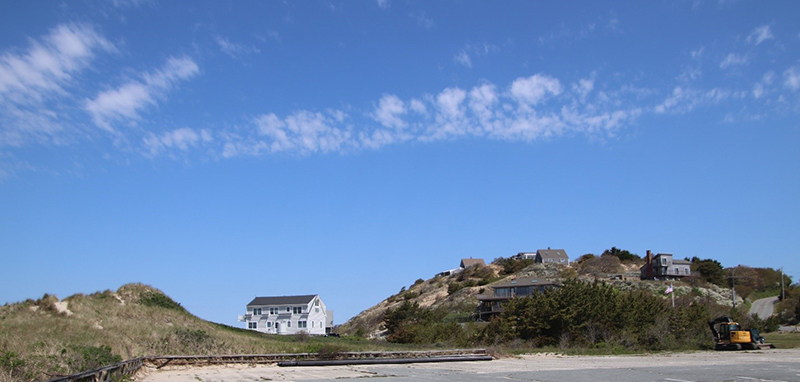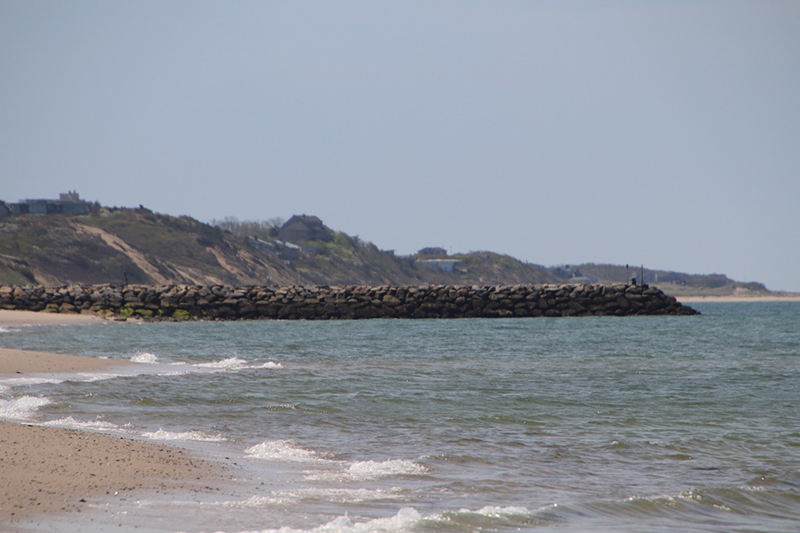
In the heart of Truro, nestled within the embrace of time and tradition, lies the charming and historic neighborhood known as Corn Hill. With its picturesque architecture, and a storied past that unfolds like a well-worn novel, Corn Hill stands as a testament to the enduring spirit of a community that has weathered centuries of change. Let’s embark on a journey through time to unravel the layers of history that make Corn Hill a living, breathing museum of Truro’s past.
The Early Roots: 17th Century Beginnings
Corn Hill’s history can be traced back to the 17th century when European settlers first set foot on the shores of Cape Cod. Originally inhabited by the Nauset tribe of Native Americans, the land eventually became a haven for the Pilgrims seeking religious freedom.
The story is told that Corn Hill received its name from the Pilgrims back in 1620 who took a hidden cache of seed corn from the Nauset tribe who inhabited the area. This appropriated stash played an important role in keeping them from starvation that first winter.
The Pilgrims may have later returned to compensate the Nausets for the loss of their corn seed stock. The settlers were drawn to the fertile soil of Corn Hill, ideal for agriculture, and soon established the first homesteads in the area.
As the community flourished, the distinctive landscape of Corn Hill began to take shape. The settlers, relying on the cultivation of corn and other crops, formed the backbone of a thriving agricultural hub. The hill itself, a prominent geological feature, provided a vantage point for early inhabitants to monitor incoming ships and potential threats, adding an element of strategic significance to the location.
Maritime Influence: 19th Century Expansion

As the 19th century dawned, Corn Hill’s identity evolved with the rise of maritime commerce in Truro. The neighborhood, strategically positioned overlooking Cape Cod Bay, became a hub for sea captains and traders. The saltbox houses that still dot the landscape today were erected during this era, reflecting the prosperity and architectural trends of the time.
Corn Hill emerged as a vital cog in the maritime machine, with its residents engaged in fishing, whaling, and trading activities. The community thrived on the economic opportunities afforded by its proximity to the sea, and the echoes of this maritime legacy resonate through the creaking floorboards of the historic homes that line Corn Hill’s narrow lanes.
A Beacon of Resistance: The War of 1812
The War of 1812 left an indelible mark on Corn Hill, as the residents rallied to defend their homes and livelihoods against British forces. The strategic importance of the neighborhood, with its panoramic views of the bay, made it a target for British raids. However, the resilient spirit of the community prevailed, and Corn Hill became a symbol of resistance during this tumultuous period in American history.

Visitors today can explore the remnants of defensive structures erected during the war, offering tangible glimpses into the struggles faced by the early inhabitants. The historic significance of Corn Hill as a bastion of resistance adds another layer to its narrative, reinforcing its position as a living monument to the resilience of the American spirit.
Transition and Transformation: 20th Century Shifts
The 20th century brought significant changes to Corn Hill as the once-agrarian community adapted to the shifting tides of modernity. With the decline of traditional agriculture and the advent of new industries, the neighborhood underwent a transformation that mirrored broader societal changes.
Corn Hill, however, managed to retain its distinctive character amidst the evolving landscape. The preservation of historic homes and landmarks became a priority, and the community actively embraced its role as a custodian of the past. The Corn Hill Artists’ Colony, established in the mid-20th century, brought a new dimension to the neighborhood, attracting artists inspired by its scenic beauty and historical ambiance. Today the art community thrives in the neighboring Truro Center for the Arts at Castle Hill
Corn Hill Today: A Tapestry of Past and Present
In the 21st century, Corn Hill stands as a living testament to the enduring spirit of Truro. The neighborhood has gracefully bridged the gap between its rich history and the demands of contemporary life. The weathered shingles, and iconic saltbox houses coexist harmoniously with modern amenities, creating a unique blend of old-world charm and 21st-century convenience.
The Corn Hill Landing, a nod to its maritime legacy, serves as a focal point for residents and visitors alike to gather and enjoy the scenic beauty of Cape Cod Bay. One notable feature in the Corn Hill area is Corn Hill Beach. This beach is known for its tidal flats and is a popular spot for beachcombing, walking, and enjoying scenic views.
Preserving the Legacy: Challenges and Triumphs
Preserving the historic integrity of Corn Hill has not been without its challenges. As development pressures loom and the demand for modernization grows, the community has faced the delicate task of balancing progress with heritage. Local preservation efforts, bolstered by community engagement and advocacy, have played a crucial role in safeguarding Corn Hill’s unique character.
The establishment of the Corn Hill Historic District, a designation granted in recognition of its architectural and historical significance, has provided a protective shield against indiscriminate development. This designation ensures that future generations will continue to traverse the cobblestone streets and soak in the ambiance of a neighborhood that has witnessed centuries unfold.

Conclusion: A Timeless Beacon
Corn Hill in Truro, with its roots reaching deep into the annals of American history, stands as a timeless beacon that beckons visitors to step into the past. The layers of its narrative, woven with threads of agriculture, maritime commerce, resistance, and adaptation, create a rich tapestry that tells the story of a resilient community.
As the sun sets over Cape Cod Bay, casting a warm glow on the historic homes and cobblestone streets, one can’t help but feel a profound connection to the generations that have called Corn Hill home. In a world that often seems to rush forward at an unrelenting pace, Corn Hill serves as a reminder that amidst progress, there are sanctuaries where the past is not just remembered but cherished, and where the echoes of history continue to shape the present and inspire the future.





This Post Has One Comment
Thank you for this article. We stayed on the hill last year for the first time and it was heavenly. Nothing but sky and bay, with evenings winds cooling down the house and the moon looked hung just for us. We can’t wait to be back. Residents of Corn Hill are fortunate, as I am sure they know.